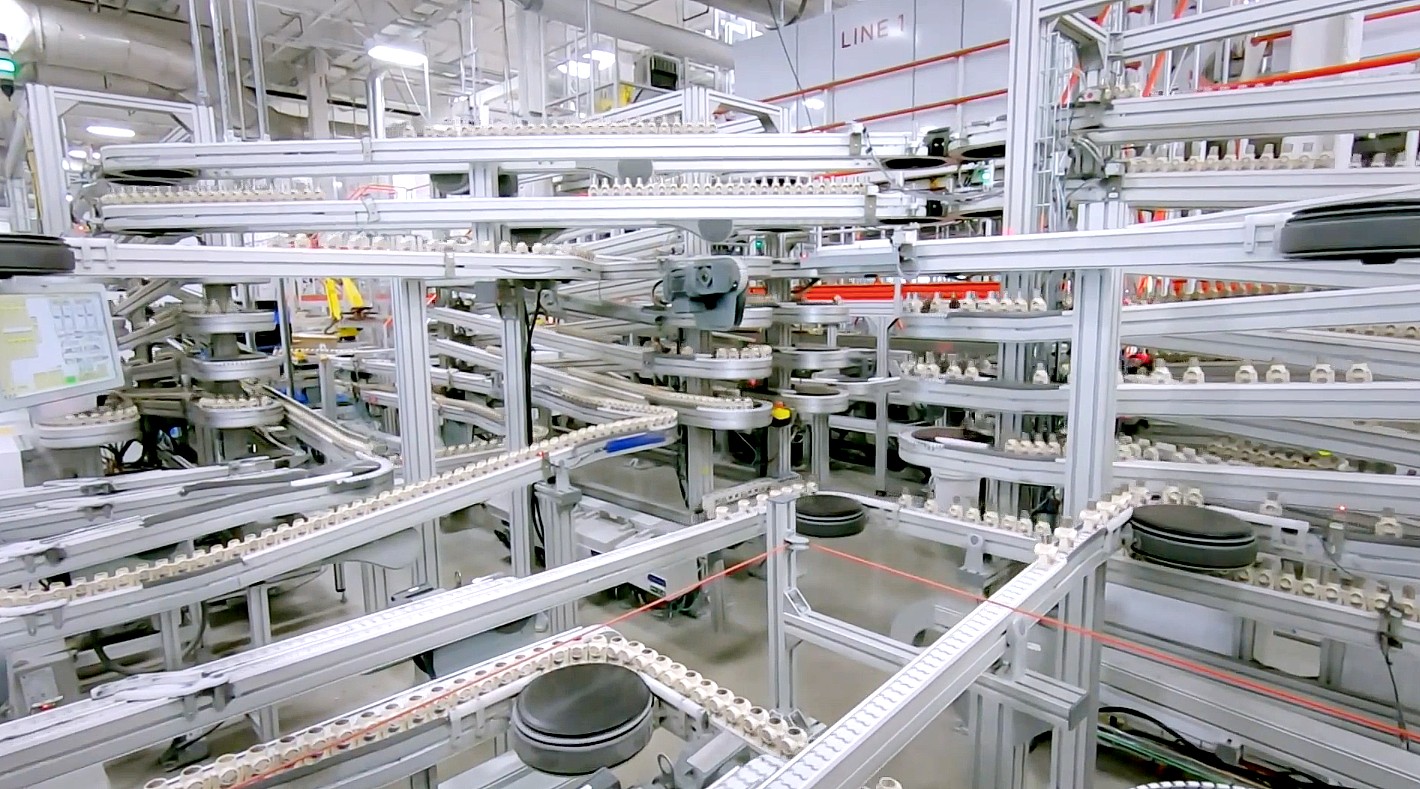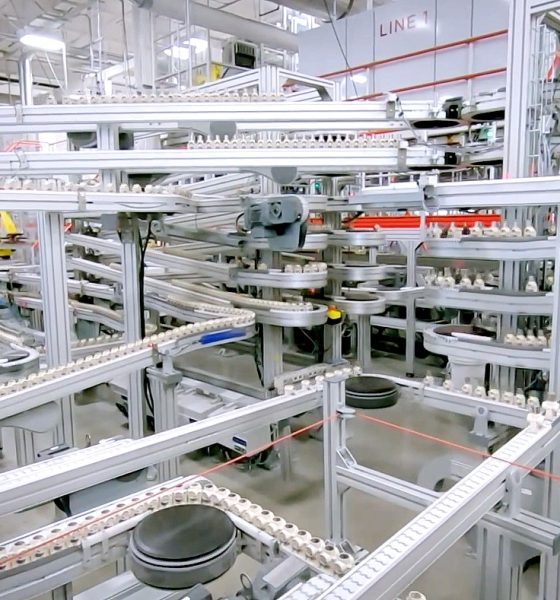

News
Tesla’s role as supplier of million-mile batteries to be shunned by rival carmakers: professor
Elon Musk has been pretty open to the idea of Tesla eventually becoming a supplier of key EV components like batteries to other carmakers. This is especially notable considering that Tesla’s powertrain and batteries are second to none, being the secret sauce of sorts to the efficiency, power, and performance of the company’s lineup of premium electric cars.
The Tesla CEO emphasized this stance last month, when he noted on Twitter that “Tesla is open to licensing software and supplying powertrains & batteries. We’re just trying to accelerate sustainable energy, not crush competitors!” Musk’s statement actually rings true, considering that the company has played the role of battery supplier to Daimler and Toyota in the past.
Tesla’s notable edge in the electric vehicle market suggests that a move to the role of a battery and powertrain supplier is well within the company’s goals. This is especially notable amidst Tesla’s highly-anticipated efforts to roll out and introduce a million-mile battery, which would likely be game-changing for the EV market. Considering Tesla’s place in the global EV segment, one would likely infer that the company’s batteries would be received positively by other carmakers.
Prof. Hwang Sung-ho, a mechanical engineering professor at Sungkyunkwan University in South Korea, begs to differ, as he believes that Tesla’s transition to the role of battery supplier may not be as smooth as expected by the company’s supporters. In a statement to The Korea Herald, Prof. Hwang stated that Tesla’s place in the auto market could actually discourage rival EV makers from using Tesla’s batteries, even if the company comes out with industry-leading cells like the million-mile battery.
“There is a possibility that Tesla will offer its own batteries to automakers because the more batteries it makes, the cheaper they become. However, automakers won’t buy batteries from Tesla no matter how good they may be because Tesla is basically their competitor in the auto market,” Hwang said.
The professor added that veteran carmakers, some of whom could make better cars than Tesla, would likely hesitate to purchase cells from the Elon Musk-led company. Hwang explained that by partnering with Tesla and acquiring their batteries, legacy carmakers, particularly those from Europe, will risk exposing their trade secrets to the younger EV maker.
“If an automaker decides to develop a new EV and load it with Tesla’s batteries, then the automaker has to share and exchange so much detailed technological information with Tesla for several years for the optimization of batteries. European automakers, who can make cars better than Tesla, won’t risk exposing their know-how. Only Chinese automakers or those who don’t have a technological lead against Tesla will consider supplying batteries from the company,” the professor said.
Regardless of Prof. Hwang’s reservations, the allure of Tesla’s batteries would likely be attractive for other automakers nonetheless. Tesla, after all, may be a young carmaker, but it is one of the market’s most experienced electric vehicle producers today. This means that the company knows EVs inside out, and this is one of the reasons why its vehicles like the Model Y Dual-Motor AWD could go beyond 300 EPA miles on a 75 kWh battery. Ultimately, if Tesla offers its powertrain and batteries at a reasonable price, there is a pretty good chance that the company will be well received by other carmakers.

News
Tesla FSD fleet is nearing 7 billion total miles, including 2.5 billion city miles
As can be seen on Tesla’s official FSD webpage, vehicles equipped with the system have now navigated over 6.99 billion miles.

Tesla’s Full Self-Driving (Supervised) fleet is closing in on almost 7 billion total miles driven, as per data posted by the company on its official FSD webpage.
These figures hint at the massive scale of data fueling Tesla’s rapid FSD improvements, which have been quite notable as of late.
FSD mileage milestones
As can be seen on Tesla’s official FSD webpage, vehicles equipped with the system have now navigated over 6.99 billion miles. Tesla owner and avid FSD tester Whole Mars Catalog also shared a screenshot indicating that from the nearly 7 billion miles traveled by the FSD fleet, more than 2.5 billion miles were driven inside cities.
City miles are particularly valuable for complex urban scenarios like unprotected turns, pedestrian interactions, and traffic lights. This is also the difference-maker for FSD, as only complex solutions, such as Waymo’s self-driving taxis, operate similarly on inner-city streets. And even then, incidents such as the San Francisco blackouts have proven challenging for sensor-rich vehicles like Waymos.
Tesla’s data edge
Tesla has a number of advantages in the autonomous vehicle sector, one of which is the size of its fleet and the number of vehicles training FSD on real-world roads. Tesla’s nearly 7 billion FSD miles then allow the company to roll out updates that make its vehicles behave like they are being driven by experienced drivers, even if they are operating on their own.
So notable are Tesla’s improvements to FSD that NVIDIA Director of Robotics Jim Fan, after experiencing FSD v14, noted that the system is the first AI that passes what he described as a “Physical Turing Test.”
“Despite knowing exactly how robot learning works, I still find it magical watching the steering wheel turn by itself. First it feels surreal, next it becomes routine. Then, like the smartphone, taking it away actively hurts. This is how humanity gets rewired and glued to god-like technologies,” Fan wrote in a post on X.
News
Tesla starts showing how FSD will change lives in Europe
Local officials tested the system on narrow country roads and were impressed by FSD’s smooth, human-like driving, with some calling the service a game-changer for everyday life in areas that are far from urban centers.

Tesla has launched Europe’s first public shuttle service using Full Self-Driving (Supervised) in the rural Eifelkreis Bitburg-Prüm region of Germany, demonstrating how the technology can restore independence and mobility for people who struggle with limited transport options.
Local officials tested the system on narrow country roads and were impressed by FSD’s smooth, human-like driving, with some calling the service a game-changer for everyday life in areas that are far from urban centers.
Officials see real impact on rural residents
Arzfeld Mayor Johannes Kuhl and District Administrator Andreas Kruppert personally tested the Tesla shuttle service. This allowed them to see just how well FSD navigated winding lanes and rural roads confidently. Kruppert said, “Autonomous driving sounds like science fiction to many, but we simply see here that it works totally well in rural regions too.” Kuhl, for his part, also noted that FSD “feels like a very experienced driver.”
The pilot complements the area’s “Citizen Bus” program, which provides on-demand rides for elderly residents who can no longer drive themselves. Tesla Europe shared a video of a demonstration of the service, highlighting how FSD gives people their freedom back, even in places where public transport is not as prevalent.
What the Ministry for Economic Affairs and Transport says
Rhineland-Palatinate’s Minister Daniela Schmitt supported the project, praising the collaboration that made this “first of its kind in Europe” possible. As per the ministry, the rural rollout for the service shows FSD’s potential beyond major cities, and it delivers tangible benefits like grocery runs, doctor visits, and social connections for isolated residents.
“Reliable and flexible mobility is especially vital in rural areas. With the launch of a shuttle service using self-driving vehicles (FSD supervised) by Tesla in the Eifelkreis Bitburg-Prüm, an innovative pilot project is now getting underway that complements local community bus services. It is the first project of its kind in Europe.
“The result is a real gain for rural mobility: greater accessibility, more flexibility and tangible benefits for everyday life. A strong signal for innovation, cooperation and future-oriented mobility beyond urban centers,” the ministry wrote in a LinkedIn post.
News
Tesla China quietly posts Robotaxi-related job listing
Tesla China is currently seeking a Low Voltage Electrical Engineer to work on circuit board design for the company’s autonomous vehicles.

Tesla has posted a new job listing in Shanghai explicitly tied to its Robotaxi program, fueling speculation that the company is preparing to launch its dedicated autonomous ride-hailing service in China.
As noted in the listing, Tesla China is currently seeking a Low Voltage Electrical Engineer to work on circuit board design for the company’s autonomous vehicles.
Robotaxi-specific role
The listing, which was shared on social media platform X by industry watcher @tslaming, suggested that Tesla China is looking to fill the role urgently. The job listing itself specifically mentions that the person hired for the role will be working on the Low Voltage Hardware team, which would design the circuit boards that would serve as the nervous system of the Robotaxi.
Key tasks for the role, as indicated in the job listing, include collaboration with PCB layout, firmware, mechanical, program management, and validation teams, among other responsibilities. The role is based in Shanghai.
China Robotaxi launch
China represents a massive potential market for robotaxis, with its dense urban centers and supportive policies in select cities. Tesla has limited permission to roll out FSD in the country, though despite this, its vehicles have been hailed as among the best in the market when it comes to autonomous features. So far, at least, it appears that China supports Tesla’s FSD and Robotaxi rollout.
This was hinted at in November, when Tesla brought the Cybercab to the 8th China International Import Expo (CIIE) in Shanghai, marking the first time that the autonomous two-seater was brought to the Asia-Pacific region. The vehicle, despite not having a release date in China, received a significant amount of interest among the event’s attendees.








